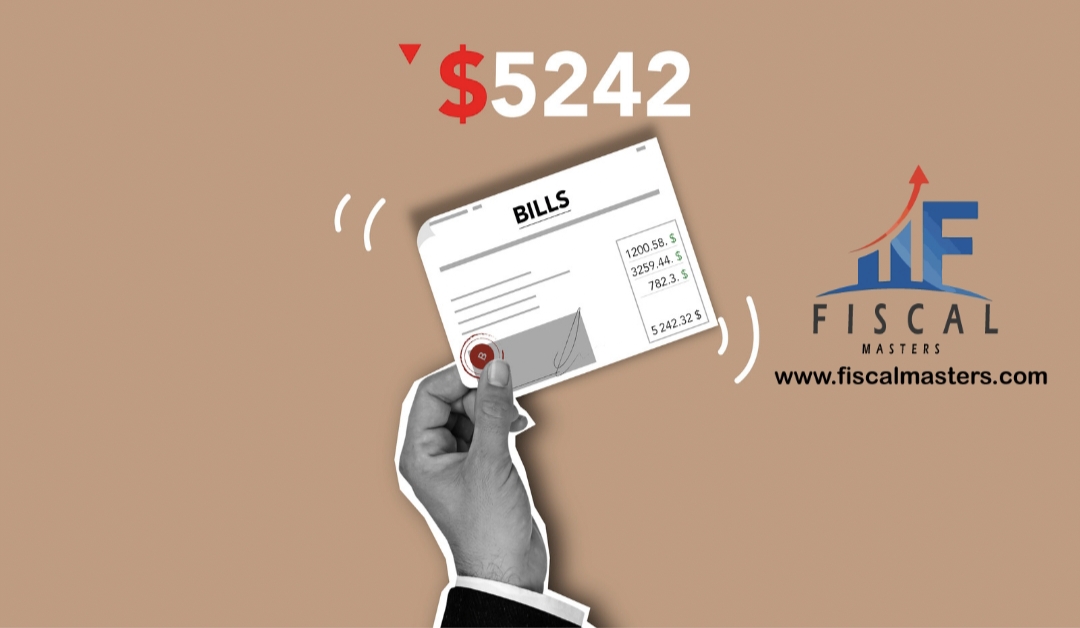Imagine throwing a pebble into a calm body of water and watching the waves travel far and wide, causing a ripple. Similar events take place in the world of personal finance, but the pebble here is the volatility of interest rates.
These simple figures have the potential to cause a chain reaction in the financial system that affects every facet of your economic environment. The impact of interest rates on other aspects of your finances, such as the loans you obtain and the investments you make, is significant.
Read more here: How will higher interest rates affect my personal finances?
Interest rates play a crucial role in the economy and have a significant impact on our personal finances. They affect everything from borrowing costs to savings and investments. In this blog post, we will explore the dynamics of interest rates and how they can influence various aspects of our financial lives.
The Basics of Interest Rates

Before diving into the main content, let’s first understand what interest rates are. Fundamentally, interest rates represent the price of borrowing money. You must repay not just the principal amount of a loan—whether it be a personal loan, a mortgage, or credit card debt—but also a payment that represents the cost of borrowing.
The interest rate is the additional amount that is calculated as a percentage of the borrowed amount. They are determined by various factors, including the central bank’s monetary policy, inflation, and market conditions.
Interest rates come in various forms, each tailored to specific financial transactions. Here are some of the most prevalent types:
Fixed Interest Rates
These rates remain constant throughout the duration of a loan or investment. Regardless of fluctuations in the wider economy, the rate you agree upon at the beginning of the agreement remains unchanged. Fixed rates offer stability and predictability, making them a favored choice for long-term loans like mortgages.
Variable Interest Rates
Unlike fixed rates, variable interest rates can change over time. These rates are often linked to a benchmark rate, such as the prime rate or the federal funds rate, which are influenced by central banks. As the benchmark rate shifts, your interest rate follows suit, potentially leading to changes in your monthly payments.
Read more: What is the difference between fixed- and variable-rate auto financing?
Annual Percentage Rate (APR)
The APR provides a comprehensive portrayal of the overall cost of borrowing. It includes not only the interest rate but also additional fees and charges. Lenders are required to disclose the APR, empowering borrowers to make well-informed decisions when comparing loan offers.
Compound Interest
Compound interest can work as a double-edged sword. When you accrue interest not only on the principal amount borrowed but also on the accumulated interest, your debt can significantly amplify over time. However, compound interest can also work in your favor when it comes to investments, allowing your money to grow exponentially.
The interest rate demonstrates how changes in borrowing costs can have a cascading effect on the economy. When central banks raise interest rates to manage inflation and boost economic growth, these changes have an impact on a variety of financial factors.
Higher interest rates increase the cost of borrowing for individuals and businesses, influencing mortgages, personal loans, and credit card debt. Saving becomes more profitable with increasing returns on savings accounts and bonds, although the value of current bonds may decline.
Read More: What is Sustainable Investing How to Align Your Profits with Environmental Goals- July 2023
Furthermore, changes in interest rates affect the stock market and consumer spending, altering economic dynamics and financial decisions at both the individual and macroeconomic levels.

Key drivers of interest rates
Central banks play a crucial role in shaping monetary policy and managing economic fluctuations. One of the primary tools used by central banks to achieve their objectives is interest rates. Here are some key drivers of interest rates and how they impact monetary policy:
Economic Fluctuations
Central banks use monetary policy to manage economic fluctuations and achieve price stability. When the economy is growing too quickly, central banks may raise interest rates to slow down borrowing and spending, which can help prevent inflation from rising too quickly. Conversely, when the economy is sluggish, central banks may lower interest rates to encourage borrowing and spending, which can help stimulate economic growth.
Inflation
Central banks aim to maintain price stability by keeping inflation within a target range. When inflation is too high, central banks may raise interest rates to reduce borrowing and spending, which can help bring inflation back down to the target range. Conversely, when inflation is too low, central banks may lower interest rates to encourage borrowing and spending, which can help boost inflation.
Global Events
Central banks may adjust interest rates in response to global events, such as the COVID-19 pandemic. During the pandemic, central banks took actions to ease monetary policy, provide liquidity to markets, and maintain the flow of credit. To mitigate stress in currency and bond markets, many emerging market central banks used foreign exchange interventions, and for the first time, asset purchase programs.
Government Fiscal Policy
Central banks may adjust interest rates in response to government fiscal policy. For example, if the government increases spending or cuts taxes, this can lead to increased borrowing and spending, which can put upward pressure on inflation. In response, central banks may raise interest to reduce borrowing and spending and help keep inflation in check.

The Ripple Effect on Borrowing
One of the most direct and tangible effects of interest fluctuations is felt in borrowing costs. When interest rises, it triggers a series of changes that can significantly influence various aspects of people’s financial lives.
Mortgages
Higher interest rates can increase the cost of homeownership. Monthly mortgage payments can become more burdensome, this change may make it more expensive for both current homeowners with adjustable-rate mortgages and potential homebuyers.
Budgets are strained by higher mortgage payments, which can also have an effect on the real estate market as a whole. Potential purchasers may become less interested in purchasing homes as a result of the rising expenses of homeownership. This might therefore result in a downturn in the housing market, which would have an impact on both real estate prices and sales volumes.
Read More: Understanding Crypto Wallets: How to Choose the Right Type to Manage your Digital Assets- July 2023
Auto Loans
Rising interest rates can also affect the affordability of car loans. Higher interest rate mean higher monthly payments, potentially deterring consumers from purchasing new vehicles. This increase in interest rate has the potential to affect consumer choices and behaviors, potentially resulting in a shift in demand in the car sector.
Consumers may consider keeping their current vehicles for longer periods of time or explore alternative modes of transportation. Furthermore, if borrowing dynamics change, the car industry, a big engine of economic activity, may see swings in sales and output.
Credit Cards
Credit card interest rates are often tied to the prime rate, which is influenced by the central bank’s interest rate decisions. When interest rates rise, credit card interest rate tend to follow suit, increasing the cost of carrying credit card debt.
Consumers who carry credit card balances may feel the effects of higher interest rates more acutely. Higher interest rate make it more difficult to pay down outstanding accounts, potentially leading to debt accumulation. Individuals may need to reconsider their spending habits and financial goals in order to properly handle the higher cost of credit card borrowing.
The Ripple Effect on Savings
Interest rate not only impact borrowing costs but also affect the returns on savings and investments. Here’s how:
Savings Accounts
Imagine you’ve been diligently saving money in a traditional savings account. When interest rises, something interesting happens – the returns on your savings account tend to increase too. This is good news for savers like you. With higher interest, the bank pays you more money as interest on your deposits. It’s like a little bonus for being responsible with your money.

Certificates of Deposit (CDs)
CDs are fixed-term deposits that offer higher interest rate than regular savings accounts. When interest rates rise, the returns on CDs also increase, making them more attractive for individuals looking to earn higher yields on their savings.
Read More: Prioritizing Debt Repayment: Strategies to Pay Off your Debt and Stay Afloat- July 2023
Bonds
Rising interest can negatively impact the value of existing bonds. When interest rises, the yields on new bonds increase, making existing bonds with lower yields less attractive to investors. This can lead to a decrease in bond prices.
When you invest in a bond, you’re basically lending money to a government or a company. In return, they promise to pay you back the money with interest over time. Now, here’s where interest comes into play. If you already own a bond and interest increases, things can get a bit tricky.
New bonds that are issued after the rates go up offer better returns, which means the value of your existing bond with lower returns might drop. This can be a bummer if you were hoping to sell your bond for a profit.
Click here to know more: Exploring different types of investment vehicles: The PROs and CONs of Investing in stocks- June 2023
The Ripple Effect on Investments
Interest rates can also have a drastic effect on various investment vehicles. Here are a few examples:
Stock Market
When interest rates rise, it can lead to higher borrowing costs for companies. This can impact their profitability and potentially lead to a decrease in stock prices. Additionally, rising interest rates can make fixed-income investments, such as bonds, more attractive relative to stocks, potentially shifting investor preferences.

Real Estate
Rising interest rates raise borrowing costs, making it difficult to get real estate financing. The resulting lowering of real estate demand due to higher borrowing costs may cause the housing market to slow.
As a result, property appreciation may slow as sellers adjust their expectations. Prospective purchasers may be put off by rising affordability concerns. As a result, the real estate landscape is intertwined with the interest rate cycle.
Read More: Managing Personal Finances: Ten Tips for Money-Saving to Achieve your Financial Goals- June 2023
Commodities
Interest rates can influence the value of commodities. For example, rising interest rates can strengthen the value of the currency, making commodities priced in that currency more expensive for international buyers. This can impact commodity prices and potentially affect industries reliant on commodities.
The Ripple Effect on the Economy
Interest rates have a broader impact on the overall economy. Here’s how:
Consumer Spending
Higher interest rates can deter borrowing and spending, as it becomes more expensive to borrow money. This can lead to a decrease in consumer spending, which can have a major effect on businesses and the economy as a whole.
Business Investment
Rising interest rates can also impact business investment decisions. Higher borrowing costs can make it less attractive for businesses to take on debt for expansion or investment projects. This can potentially slow down economic growth.
Inflation
Interest rates can influence inflation levels. When interest rates rise, it can help curb inflation by reducing consumer spending and borrowing. Central banks often raise interest rates to control inflationary pressures in the economy.
Interest rates can have a significant impact on consumer spending habits. Here are some ways in which interest rates can affect consumer spending:
Major Purchases
During periods of low interest rates, consumers may be more likely to take on debt to finance significant purchases such as vehicles and appliances. This increased spending can help stimulate economic growth.
Read more: Introduction to Cryptocurrency: The PROs and CONs Cryptocurrency Investing- June 2023
Disposable Income
Conversely, high interest rates can increase debt payments, which can reduce disposable income. This scenario may lead to decreased consumer spending, which can slow down economic activity.
Credit Cards
Credit card teaser rates can also impact consumer spending and borrowing behavior. Offering teaser rates can increase the revenue generated by customers by indirectly increasing indebtedness. Customers who pay off their promotional balances before the termination of the promotional period may borrow even more at regular rates than customers who do not pay off their balances timely.

Real-world Examples of the Ripple Effect of Interest Rates
The 2008 Financial Crisis
The 2008 financial crisis is a prime example of the changes interest rate can cause. In the years leading up to the crisis, interest rates were low, which led to a housing boom. Banks were lending money to people who couldn’t afford to pay it back, and when interest rates eventually rose, many people defaulted on their mortgages, leading to a housing market crash.
This, in turn, led to a banking crisis, as banks had invested heavily in the housing market and were left with billions of dollars in bad debt. The ripple effect of the crisis was felt throughout the global economy, leading to a recession that lasted for several years.
Read More: Understanding Credit Scores: How to Improve and Maintain a Good Credit Score- July 2023
The COVID-19 Pandemic
The COVID-19 pandemic is another example of the this. As the pandemic raged on, central banks around the world slashed interest rates to try to stimulate economic growth.
This led to a surge in demand for bonds, which caused bond prices to rise and yields to fall. This, in turn, led to a surge in demand for stocks, which caused stock prices to rise
However, as the pandemic continues to impact the global economy, rising inflation and supply chain disruptions have led to concerns about rising interest rates and their potential impact on the stock market.
The Tech Stock Sell-Off
In October 2022, rising interest rates led to a sell-off in tech stocks. As interest rates rise, investors become more attracted to bonds, which offer higher yields and are generally considered less risky than stocks. This can lead to a sell-off in stocks, particularly in sectors like technology, which are seen as riskier investments.
Navigating the Interest Rate Landscape
Given the profound impact of interest rates on personal finances, it’s crucial to have a strategy in place to navigate this dynamic landscape.
Stay Informed
It is critical to keep up with economic news and central bank announcements. Understanding the elements that influence interest rate changes might help you anticipate prospective changes in borrowing costs and investment opportunities. Inflation rates, job data, and GDP growth can all provide useful insight into the path of interest rates.

Diversify Investments
Diversification is still an important investment principle. Developing a well-balanced portfolio with a diverse range of asset classes can assist to limit the risks posed by interest rate swings. You can hedge against potential losses in any single asset class due to fluctuating interest rates by holding a mix of stocks, bonds, real estate, and other investments.
Manage Debt Wisely
Debt management is an important aspect of financial planning, particularly in a changing interest rate environment:
Consider refinancing existing loans, such as mortgages, when interest rates are low. Refinancing can help you secure lower interest rates and potentially cut your monthly payments, allowing you to free up funds for other financial goals.
Pay Off High-Interest Debt First: Paying off high-interest debt should come first. Credit card balances and personal loans, for example, incur interest at a faster rate. You can reduce their long-term influence on your finances by focusing on paying them down.
Adjust Savings Strategies
Tailor your savings strategies based on the prevailing interest rate environment. Take advantage of high-interest savings accounts and investment opportunities during periods of low rates.
Review Retirement Plans
Regularly review your retirement plans in light of changing interest rates. Adjust your portfolio and retirement income expectations to align with the current financial landscape.
In addition to these general strategies, there are also specific investment opportunities that can help you profit from rising interest rates. For example, investing in sectors that tend to perform well in a rising interest rate environment, such as banks and brokerage firms, tech and health care stocks, and real estate investment trusts (REITs), can be a smart strategy for maximising returns during periods of increasing rates.
However, it’s important to remember that no investment strategy is foolproof, and it’s always important to carefully evaluate each investment opportunity before making any decisions. By understanding which sectors tend to perform well in a rising interest rate environment and staying informed about potential shifts, you can develop a well-rounded strategy to navigate the interest rate landscape and achieve your financial goals.

Conclusion
Understanding the ripple effect of interest rates and how they impact your finances is crucial for making informed investment decisions. As interest rates fluctuate, they have a major effect on various aspects of the economy, including small businesses, the stock market, and individual investments. Low interest rates can stimulate borrowing and consumer spending, while higher interest rates can increase borrowing costs and potentially slow economic growth.
In the stock market, rising interest rates can affect earnings, stock prices, and investor preferences for fixed-income investments. Additionally, interest rate changes can impact the value of investments in real estate and commodities.
By understanding the relationship between interest rates and different financial sectors, investors can better navigate the potential impacts on their investments and adjust their strategies accordingly. Therefore, staying informed about interest rate trends and their effects is essential for managing and optimizing your finances.



